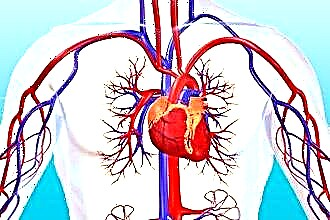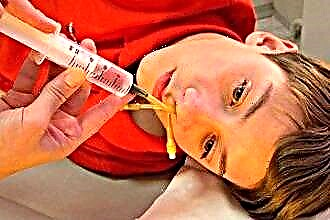Medical statistics provide disappointing data every year. The number of people diagnosed with heart disease is increasing. The most common pathology is left ventricular failure. It is more common in older people. It is important to know the causes of its occurrence, symptoms and how to help a person diagnosed with this disease.

Symptoms of pathology
This disease occurs in the case of insufficient work of the heart muscle, which delivers blood to vital organs. As a result, the body experiences oxygen starvation, lack of nutrients and trace elements, which leads to the development of serious complications.
In cardiology, a distinction is made between right-sided and left-sided insufficiency. Each of the pathologies has its own symptoms and development process. Left ventricular failure occurs against the background of severe damage to the left heart. Pathological congestion of lymph in the lungs is accompanied by:
- lack of oxygen;
- problematic breathing;
- bronchial asthma;
- pulmonary edema.
The development of left ventricular failure leads to impaired brain activity and intracranial pressure. The progress of pathology is observed in diseases such as heart disease, ischemia, cardiomyopathy, and vascular hypertension. Its occurrence is a consequence of damage to blood vessels, provoked by myocardial infarction, anemia, severe intoxication of the body with narcotic and alcoholic substances.
If the patient has been diagnosed with left ventricular failure, it is very important to follow the treatment recommended by the doctor. In this case, neglect of health can be fatal.
All heart conditions have similar symptoms: chest pain that affects the left arm, shoulder blade, and neck. Acute left ventricular failure, in addition to the main symptoms, may also include:
- fever;
- a sharp decrease or increase in body temperature;
- shortness of breath;
- blood pressure surges;
- arrhythmia attacks;
- dizziness, fainting;
- the presence of cyanosis on the skin;
- enlargement of the liver;
- a strong increase in the abdomen as a result of the accumulation of excess fluid.
Patients with an acute form of this ailment note frequent darkening in the eyes, severe swelling of the limbs.
With the development of the disease, its symptoms appear more and more often, both in the active and passive state of a person.
Insufficiency of the left ventricle may be accompanied by an increased heart rate in the patient, severe cough, intermittent breathing with a whistle. This is due to the fact that as a result of pathology, blood enters only the vessels of the small circle. This leads to pulmonary edema. This condition is very dangerous for the patient, as it can provoke a transient death.
Causes of left ventricular failure
Acute failure of this type is most often observed in patients over 60 years of age. But there are cases when the disease affects people over 40 years of age. The development of this ailment is provoked by myocardial infarction and coronary heart disease. Heart defects and cardiomyopathy are considered less likely causes of the disease. Often in older patients, the development of the disease is caused by type 2 diabetes mellitus, in combination with high blood pressure.
The factors for the development of the disease are nervous overstrain, hard physical work, which is accompanied by a lack of adequate rest and overwork.
Among the reasons provoking pathology, one can also include:
- acute viral diseases that a person carries on his feet;
- advanced pneumonia;
- taking drugs that can be toxic to the heart and the body as a whole;
- abuse of coffee and energy drinks, which contain large doses of caffeine.
A person who is overweight and does not follow a healthy lifestyle is at risk. In addition, people who abuse alcohol or smoke are more likely to develop heart disease.
Left ventricular heart failure can result from myocardial infarction as well as severe arrhythmias. With this pathology, the minute output and the amount of blood that must enter the arterial vessels are sharply reduced.
With the development of the disease, the load on the heart increases, because it is trying with all its might to compensate for the changes occurring in the vascular system. The heart muscle begins to contract more strongly, its rhythm becomes more frequent, capillaries and arterioles expand, tissue perfusion increases. The development of pathology leads to stretching of the myocardial muscles. The muscular layer of the heart is constantly tense, trying to push the blood into the blood vessels, which ultimately leads to its hypertrophy. This is how heart failure occurs, which is characterized by:
- Oxygen starvation of the body. At the same time, oxygen absorption by tissues occurs only by 30%, with a norm of 60-70%. A state of acidosis begins when the body requires oxygen, but the circulatory system cannot deliver it. In the presence of this problem, the patient has shortness of breath and cyanosis of the skin;
- Swelling. They develop due to fluid retention in the body. Insufficient work of the heart muscle increases blood pressure and causes disturbances in protein metabolism, which leads to a decrease in the amount of urine and changes in its structure. It becomes dark in color and viscous. Swelling begins in the lower extremities, then affects the abdominal cavity and moves to the hands;

- Stagnant changes in the organs. At the same time, the respiratory capacity decreases, which leads to bronchitis, pneumonia, and bloody expectoration. Patients experience pain in the right rib area. As a result of stagnant processes, gastritis can develop with vomiting and loss of appetite.
With left ventricular failure, the patient quickly gets tired, his mental and physical activity decreases, sleep is disturbed, he becomes irritable, prone to depressive states.
Typology
Acute left ventricular failure is the most common form of heart disease in patients with myocardial infarction. It is also found among patients suffering from heart disease, hypertension, sclerosis of the cerebral vessels. The basis for its development are disturbances in the circulatory system of the left ventricle.
The disease is characterized by partial blood flow to the aorta and left ventricle. Due to insufficient blood volume, the pressure of the left ventricle increases, and this, in turn, leads to an increase in pressure in the left atrium. At this time, the right ventricle pumps blood into the pulmonary vessels, and the left one cannot cope with this volume due to limited work. As a result, stagnant processes occur in the lungs.
The fluid enters the pulmonary capillaries and alveoli, forming pulmonary edema. The patient's attack develops rapidly. Its characteristic time is evening or night. The person begins to experience difficulty breathing, then the condition is aggravated by attacks of suffocation. The patient feels severe weakness, which is accompanied by a paroxysmal cough with reddish foamy sputum.
When listening to the patient, deaf heart sounds are clearly audible, which are manifested with a wheezing exhalation and a difficult inhalation of the patient. All these symptoms indicate the development of cardiac asthma, followed by cyanosis and dry wheezing in all parts of the lungs. Serious breathing problems develop, leading to severe pulmonary edema. Acute left ventricular failure is an extremely dangerous condition of the patient, which can be fatal.
 The chronic form of this disease, as well as the acute one, develops against the background of diseases that increase the load on the left ventricle. But the difference is that chronic left ventricular failure does not develop so rapidly, but gradually, in a less aggressive form. This allows the patient to feel no discomfort and pain for a long time. The disease in a chronic form can lead to venous congestion in the tissues of the lungs.
The chronic form of this disease, as well as the acute one, develops against the background of diseases that increase the load on the left ventricle. But the difference is that chronic left ventricular failure does not develop so rapidly, but gradually, in a less aggressive form. This allows the patient to feel no discomfort and pain for a long time. The disease in a chronic form can lead to venous congestion in the tissues of the lungs.
Early signs of chronic left ventricular failure include:
- Sudden onset of shortness of breath even during a passive state of a person. Rare cases of tachycardia may occur, even at rest. Seizures occur more often when the person's body is in a horizontal position. This forces the patient to stand up, sit, and lower their legs to the floor.
- Coughing fits, with gray expectoration.
- Frequent manifestations of tachycardia during an active or passive state of a person.
- Changing the size of the heart. It begins to expand to the left. When listening, you can hear the rhythm of the gallop. The patient's pulse quickens, breathing is difficult, strong wheezing is heard in all parts of the lung.
After taking an X-ray and taking a picture, the patient confirms the presence of congestion in the lungs, and the results of the study of indicators of external respiration indicate respiratory failure. A person's condition can improve after prescribing and taking diuretics. After performing the cardiogram, you can see the horizontal line of the heart, its hypertrophy and left ventricular overload. Often in patients with a chronic course of the disease, there is a sharp development of acute left ventricular failure, which manifests itself as cardiac asthma and pulmonary edema.
First aid: when is it needed?
Cardiac asthma and pulmonary edema associated with acute left ventricular failure can lead to heart attack or death.  Therefore, the doctor's task is aimed, first of all, at alleviating the patient's condition, and then only at reducing pulmonary edema. After carrying out the necessary manipulations, the patient should be immediately taken to the cardiology department.
Therefore, the doctor's task is aimed, first of all, at alleviating the patient's condition, and then only at reducing pulmonary edema. After carrying out the necessary manipulations, the patient should be immediately taken to the cardiology department.
- The victim's head should be held high. For this, another pillow is placed on him.
- If the patient's condition allows him to take a sitting position, he is seated, and his legs are lowered to the floor. They are put on tourniquets with pressure, which significantly exceeds the normal arterial pressure. They are used again every 15 minutes, with short breaks between procedures.
- Every three minutes the patient should dissolve 1 tablet of "Nitroglycerin". In total, he must take 4 tablets.
- In order to remove the formation of phlegm and bubble foam in the respiratory tract, the patient undergoes an inhalation procedure consisting of oxygen and alcohol. The duration of inhalation of ethyl vapor should not exceed 30 minutes. Then oxygen inhalation is performed for 15 minutes, after which alternation occurs again.
- Upon completion of inhalation, the patient is prescribed medications that should lower blood pressure, remove pain syndrome and bronchial spasms.
- In the treatment of pulmonary edema, diuretics are added to drugs that reduce pressure, which remove excess fluid from the tissues and blood vessels of vital organs.
Transportation of the patient in an ambulance is possible only after reducing congestion in the lungs. If it is not possible to quickly achieve the desired result, the ambulance team should remain at the patient's home until his condition improves.
Medicines to combat the disease are prescribed for each patient individually. In no case should the treatment be superficial, since left ventricular failure that has not been cured leads to serious complications.
If drug therapy does not improve the patient's condition, surgery is recommended. This can be cardiomyoplasty or the installation of an implant - a vessel that can improve blood circulation and the functioning of the vascular system as a whole.
Both operations have certain risks. But in case of a favorable outcome of the patient, a positive therapeutic effect awaits. The result will be noticeable several months after surgery or postoperative recovery. In this case, the final decision remains with the patient. And in this case, it is difficult to do without consulting an experienced cardiologist.
In order for left ventricular failure not to become a problem in old age, you need to lead a healthy lifestyle, not abuse alcohol, smoking, coffee, energy drinks, play sports, which not only develops endurance, but also strengthens the heart muscle. It is very important to be in the fresh air more often, to worry less, to think positively, to eat only healthy food. By adhering to these rules, the body will remain strong and healthy for a long time.




